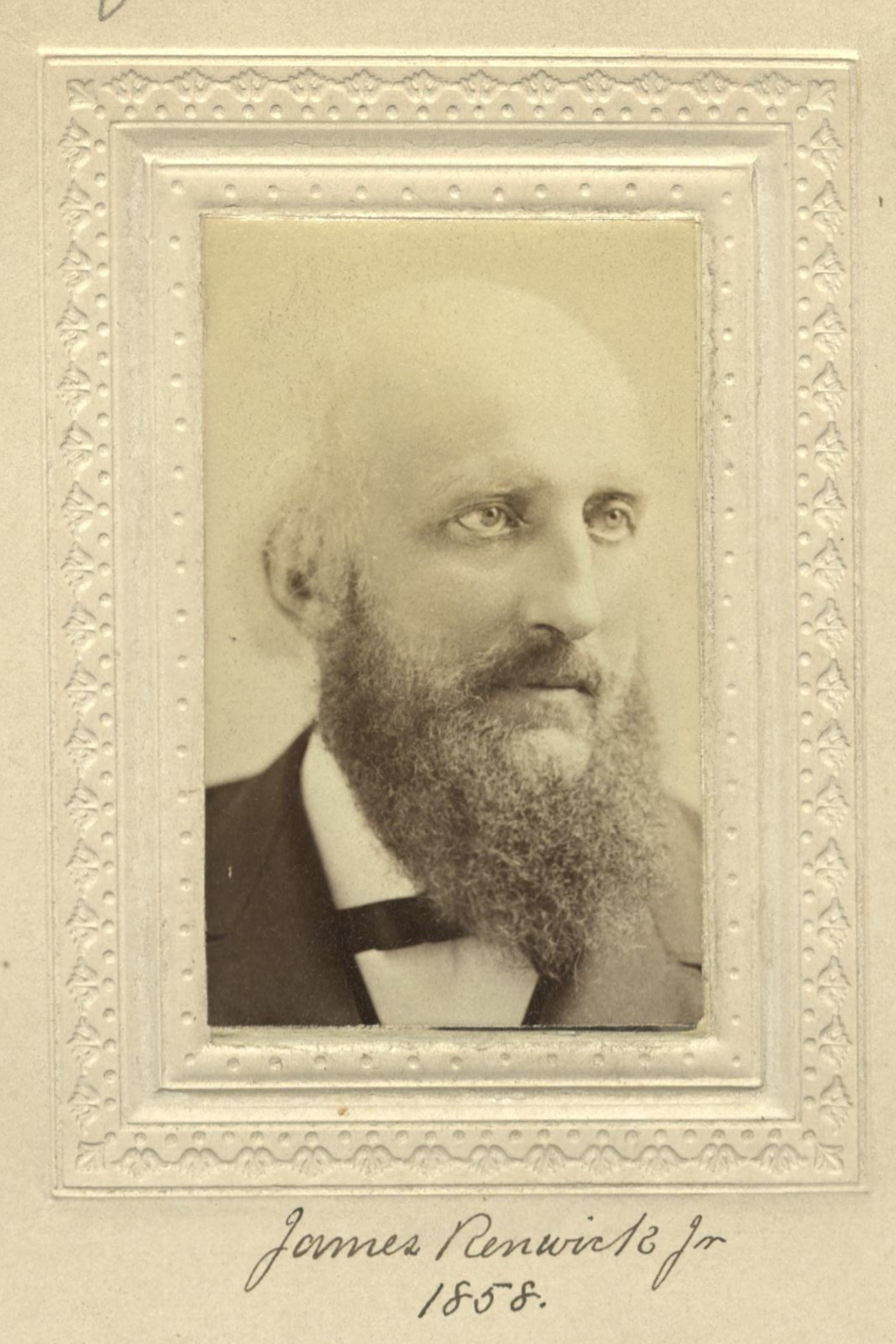Architect
Centurion, 1858–1895
Born 11 November 1818 in New York (Manhattan), New York
Died 23 June 1895 in New York (Manhattan), New York
Buried Green-Wood Cemetery , Brooklyn, New York
, Brooklyn, New York
Proposed by Peter R. Strong
Elected 6 November 1858 at age thirty-nine
Archivist’s Note: Son of James Renwick; son-in-law of William H. Aspinwall
Proposer of:
Century Memorials
James Renwick, who was a descendant of a noted New York family, was one of the most widely known and ablest architects of this city, whose work, from his entrance into the profession nearly sixty years ago, was of a high order of merit; and, with all the improvement and development of architecture in this country in later years, commends itself to the appreciation of a cultivated and educated taste. Grace Church and St. Patrick’s Cathedral are alone sufficient to have given him his well-deserved reputation; but his work all through the city, and indeed throughout the country, in the erection of churches, public and private buildings, and in government work, gives evidence of his skill and capacity, which made him prominent and brought him substantial reward.
Henry E. Howland
1896 Century Association Yearbook
Renwick was born into a wealthy and well-educated family. His mother, Margaret Brevoort, was from a socially prominent New York family, and his father, James Renwick, was an engineer, architect, and professor of natural philosophy at Columbia College, now Columbia University. Renwick studied engineering at Columbia, entering at age 12 and graduating in 1836. He received an M.A. three years later.
In 1843, at the age of 25, Renwick received his first major commission, to design Grace Church, in New York City, and a year later he won the competition for the design of the Smithsonian Institution Building. The many-turreted building, designed in the Romanesque style, is generally referred to as “the Castle.” It was a major influence in the Gothic revival in the U.S.
In 1849, Renwick designed the Free Academy Building (City College of New York) at Lexington Avenue and 23rd Street, one of the first Gothic Revival college buildings on the East Coast. Renwick went on to design what is considered his finest achievement, and his best-known building, St. Patrick’s Cathedral. He was chosen as architect for the cathedral in 1853, construction began in 1858, and it opened in May 1879. The cathedral, the most ambitious essay in Gothic that the revival of the style produced, is a mixture of German, French, and English Gothic influences.
Among the other buildings that Renwick designed was the Corcoran Gallery of Art (now home to the Smithsonian’s Renwick Gallery), in Washington, D.C.; Saint Bartholomew’s Church in New York; the New York Stock Exchange; and All Saints’ Roman Catholic Church in Harlem. Several of Renwick’s protégés became influential architects, including Bertram Goodhue, who was a partner of Ralph Adams Cram, and William Hamilton Russell, a grand nephew of Renwick.
James Charlton
“Centurions on Stamps,” Part I (Exhibition, 2010)

